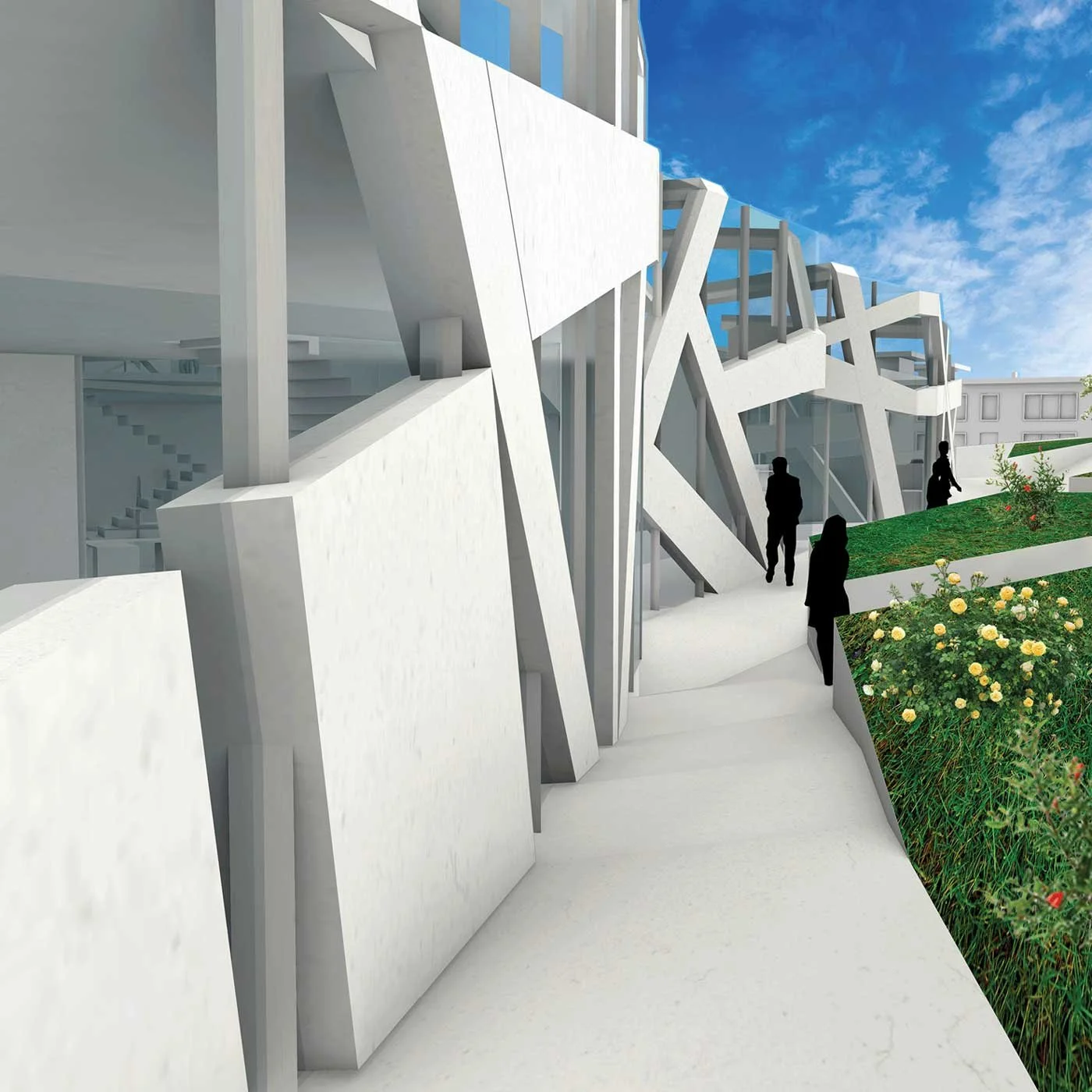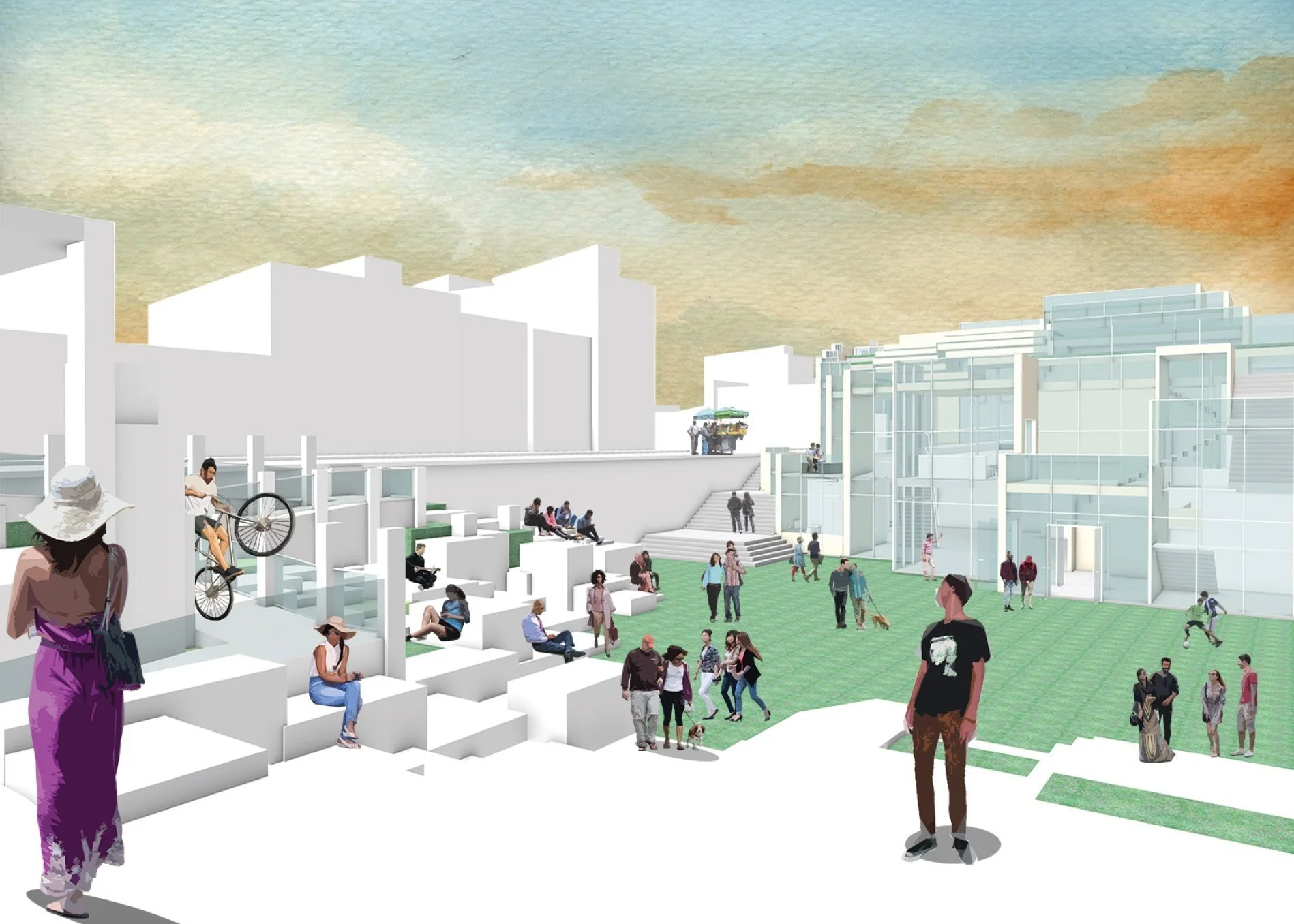In teaching, I am a strong believer in Architecture as Social Changing Agent, Experiential Learning, and Drift Exploration beyond the traditional boundaries.
Rise Up by Christopher Bryan, Architectural Design III FA 2020, NYCCT
Architecture as Social Changing Agent
The societal impact should always be the focus of architectural practice and learning. By introducing projects that deal with social, economic and environmental issues, the students will learn how design can be a transformative agent for change. The projects can be on various scales as a shelter, a place for gatherings and a neighborhood education center, or a large public housing complex. In Architectural Design III, which I taught at CityTech, the students are asked to research a specific social, economic or environmental issue and then generate concept collages and notations to summarize the research. They then come up with design concepts drawing both from the geometric compositions and solutions to the specific issue. How the design raises awareness and engages the public to discover and participate in the collective societal issue is at the core of the design studio.
Shattered Cities by Anthony Phung, Architectural Design III FA 2022, NYCCT
Experiential Learning
Learning by experiencing is another important component of my teaching philosophy. If the students are going to design a living complex for blind people, they shall experience being blind as part of the design research. The students will be asked to work as pairs and one of them will be blindfolded to walk through a building to experience how to move around the space and brainstorm ideas of how the living environment can be improved for the specific clients. With this real-life experience, they are usually more engaged with the design process and build up their attention to detail. Another example is to establish a real-life client for the students to develop their projects. The students will be organized in groups to simulate the environment in a small office. They will meet with the client to identify design problems, and program requirements and to investigate a real site. They will then come up with design concepts and options and prepare presentations to the clients. Upon feedback, they will evaluate the comments and revise their design proposals. I found the students are usually more engaged once a real client is involved in the project. They also enjoy the camaraderie of working as a group.
The Submerging Pathways by Luis Rendon, Architectural Design III FA 2021, NYCCT
Drift Exploration
Curiosity and self-exploration is the engine to discovering new ideas, conditions or possibilities. I would encourage the students to drift in the city, to see, to listen and to feel the environment around them; to pick up an artist biography randomly in the library to discover something parallel to architecture yet different; to visit museums whenever possible; to keep a small pocket notebook to write down words, phrases or scribbles; to talk to strangers and listen to their point of views.
The discussions generated through the teaching process help us to self-reflect on our beliefs and methodology, which further inspires new research directions. The reciprocal process between practicing, researching and teaching has built the strong foundation of a mutually beneficial relationship and will continue to nourish the ideas of tomorrow.









